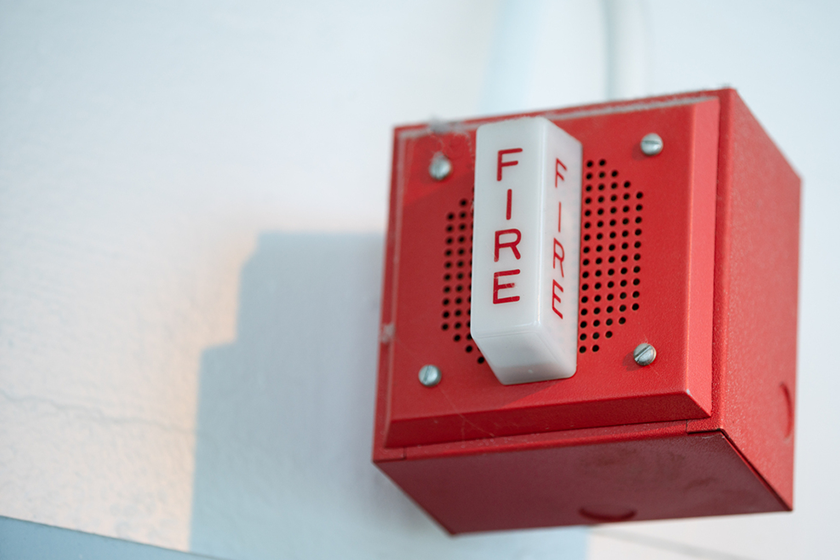What Is Special Hazard Fire Protection And Who Needs It?

Special hazard fire protection is a specialized area of fire safety that focuses on safeguarding environments where traditional fire sprinkler systems might be ineffective or even pose a risk. These systems are needed in industries and situations where the presence of certain materials, equipment, or operational processes creates a unique fire hazard.
Special hazard fire protection systems are designed to protect both property and life in these types of settings. The International Building and Fire Codes refer to these as “Alternative Automatic Fire-Extinguishing Systems.” However, in the context of this discussion, they are referred to as special hazard fire protection.
Why You Need Special Hazard Fire Protection?
Traditional fire sprinkler systems are effective in many environments but can be inappropriate or inadequate in others. For example, areas housing sensitive electronic equipment or volatile substances require specialized systems that can extinguish fires without causing further damage or creating additional hazards. This is where special hazard fire protection systems come into play.
Types of Special Hazard Fire Protection Systems
- Foam-Water Sprinkler Systems and High-Expansion Foam Systems
Foam-water sprinkler systems and high-expansion foam systems are set up to combat liquid fires (which can be found in environments like aircraft hangars or locations where flammable liquids are stored or handled).
These systems work by smothering the surface of the liquid fire with a foam blanket, cutting off the fire’s oxygen supply and extinguishing it. Special hazard fire protection here is imperative because traditional sprinklers could spread the fire rather than extinguish it.
- Clean Agent Systems
Clean agent systems use gaseous extinguishing agents – either inert gases or fluorine-based compounds – to suppress fires without damaging sensitive electronic equipment. These systems are perfect for environments like data centers, where water from traditional fire sprinklers could cause irreparable damage.
Clean agent systems work by either absorbing the heat from a fire (in the case of fluorine-based agents) or displacing the oxygen required for combustion (in the case of inert gases). This type of special hazard fire protection is especially useful in safeguarding critical infrastructure.
- Dry and Wet Chemical Systems
Dry and wet chemical systems are frequently used in commercial kitchens and industrial settings. These systems blanket the surface of burning materials with chemicals that disrupt the chemical reactions sustaining the fire. A simple example is using sodium bicarbonate (baking soda) to extinguish a small cooking fire.
Wet chemical systems are frequently used to extinguish fires in oil fryers, so they’re indispensable in food service environments. These systems represent a form of special hazard fire protection customized to the specific risks present in certain operational environments.
- Condensed Aerosol Systems
Condensed aerosol systems extinguish fires by using a propellant and particulate to interrupt the chemical chain reaction necessary for combustion. These systems are highly effective in enclosed spaces and can be used in environments where traditional fire suppression methods might not be feasible.
The effectiveness of these systems lies in their ability to suppress fires without the need for water or other liquid agents. They are an important component of special hazard fire protection.
Application Types: Local Application vs. Total Flooding
Special hazard fire protection systems can be categorized based on their application method: local application systems and total flooding systems. Knowing the difference between these two is necessary to choose the appropriate fire protection strategy.
- Local Application Systems
Local application systems are usually used in industrial settings to protect specific equipment, working spaces, or partially enclosed areas. Examples include engine compartments, IT closets, electrical switchgear, and kitchen hoods.
These systems are most often pre-engineered to deal with the specific hazard they are designed to protect against. Local application systems are a form of special hazard fire protection that targets a specific area rather than an entire room or building, so they’re highly effective in localized fire scenarios.
- Total Flooding Systems
Total flooding systems, on the other hand, are engineered to suppress fires within an entire room or enclosed space. These systems are designed to cover the entire area, making certain that even hard-to-reach places are protected.
Total flooding systems can be used in environments where a fire could spread rapidly, like in server rooms or storage facilities housing flammable materials. This form of special hazard fire protection is important for complete coverage in high-risk environments.
System Activation Methods
- Manual Activation
Manual activation involves the mechanical triggering of the fire suppression system. This can occur through different means, like pulling an activation handle or having a suppression head fuse. Manual activation is used in environments where immediate human intervention is required (as with kitchen suppression systems).
- Automatic Activation
Automatic activation relies on smoke detectors or electronic heat to trigger the fire suppression system. These detectors send an activation signal to a solenoid valve or control panel, which then activates the system. Automatic activation is used for environments where rapid response is critical, and human intervention might not be possible or practical.
- Dual Activation
In some cases, special hazard fire protection systems are designed to be activated both manually and automatically. This dual activation approach brings an added layer of safety, so the system can be triggered even if one method fails.
- System Monitoring
Monitoring is non-negotiable where any special hazard fire protection system is concerned. These systems are usually required to be monitored by a building’s fire alarm system. If no fire alarm system is present, the special hazard system might not be required to be monitored.
But it is still recommended to guarantee maximum safety. Effective monitoring will help see to it that the system is functioning correctly and can be activated quickly in the event of a fire.
Who Needs Special Hazard Fire Protection?
Special hazard fire protection is needed for any environment where traditional fire sprinkler systems are not suitable. Below are some examples of industries and settings that require these specialized systems:
- Data Centers and IT Facilities
Data centers house valuable electronic equipment that could be severely damaged by water-based fire suppression systems. Special hazard fire protection systems, like clean agent systems, are perfect for these environments. They can extinguish fires without harming sensitive equipment.
- Industrial Manufacturing
Industrial settings can involve the use of flammable liquids, gases, and other hazardous materials that require specialized fire protection. High-expansion foam systems and other special hazard fire protection solutions are necessary for the safety of these environments.
- Commercial Kitchens
Commercial kitchens are high-risk environments due to the presence of cooking oils and open flames. Wet chemical systems and other specialized fire protection solutions are necessary to prevent fires from spreading and causing severe damage.
- Aircraft Hangars and Storage Facilities
Aircraft hangars and storage facilities might house flammable liquids and other hazardous materials that could lead to catastrophic fires. Special hazard fire protection systems are needed in these settings so fires can be quickly and effectively suppressed.
- Healthcare Facilities
Healthcare facilities, especially those with operating rooms and laboratories, require special hazard fire protection systems to safeguard patients, staff, and equipment. These environments can contain flammable gases and other materials that require specialized fire suppression solutions.
Fire Safety Alarms: Your Partner in Special Hazard Fire Protection
At Fire Safety Alarms, Inc. (FSA), we know the importance of specialized fire protection solutions. Since 1979, we have been committed to providing top-notch fire alarm systems and fire alarm services to our clients.
We take pride in our ability to deliver prompt and reliable emergency management and services to safeguard your property and personnel. With over four decades of experience, we have built a reputation for excellence in the fire protection industry.
To learn more about how Fire Safety Alarms can help protect your facility with special hazard fire protection systems, call us at 201-963-4030 or use our online form to reach out today.
